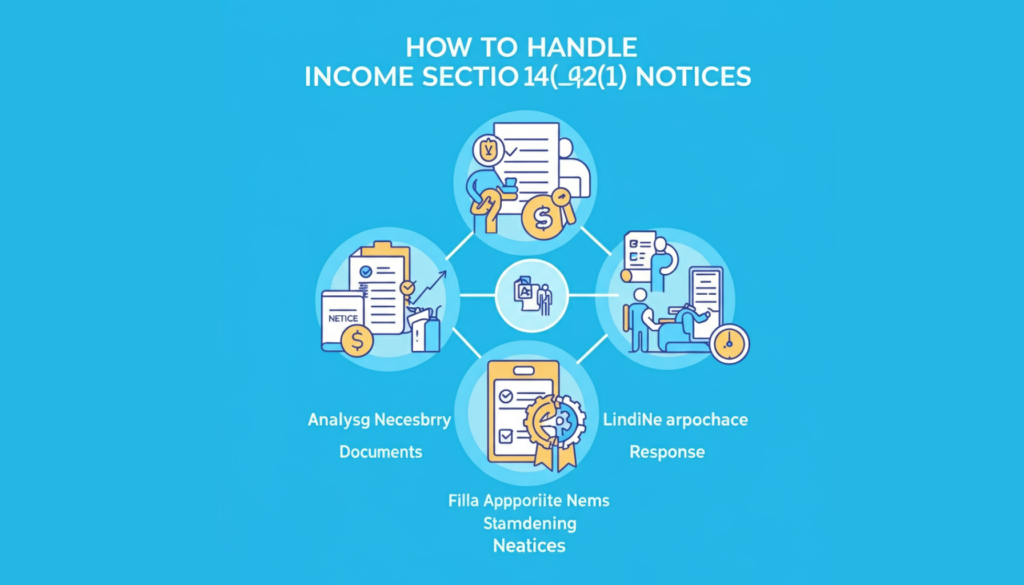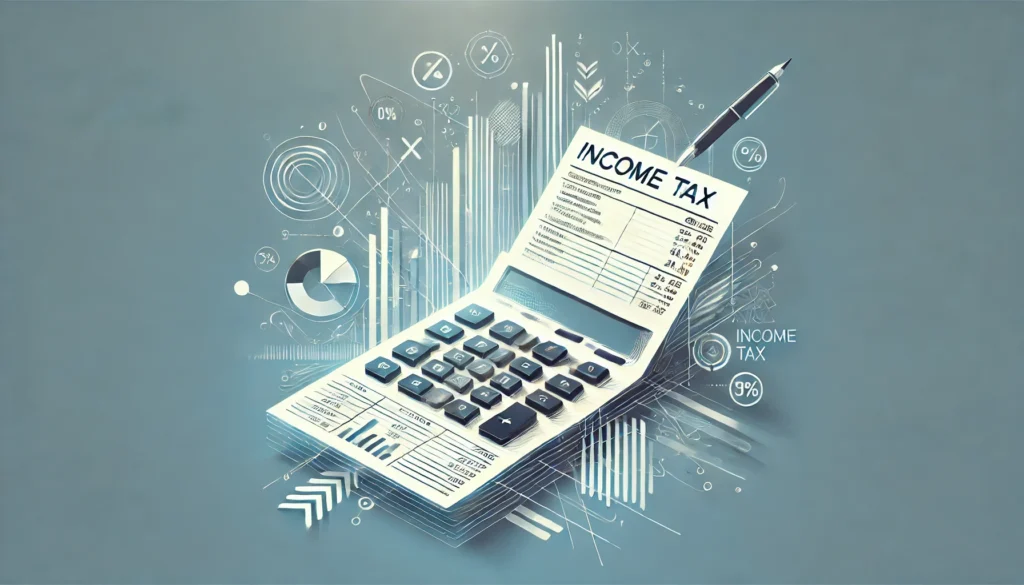From Ancient Times to Modern Day: The Journey of Income Tax in India Introduction Taxation has been an integral part of civilization, and India is no exception. The history of income tax in India is a riveting story of power, politics, and evolving policy-making. From ancient kingdoms to present-day governance, the way taxes have been levied, collected, and utilized reflects the growth of Indian society. This blog explores the evolution of income tax in India, providing insights into its origins and the milestones that shaped the Indian tax system. Table of Contents The Roots of Taxation in Ancient India Taxation in India started as early as ancient times, where the concept of tax was embedded in moral and religious obligations. During the Vedic period (1500-500 BCE), the rulers collected “Bali,” a voluntary offering from their subjects. This early form of taxation wasn’t enforced but was seen as an obligation to society and the state. For more about Tax story Read our Blog :- The Tax Story Before GST: Unraveling India’s Constitutional Framework Taxation Under the Mauryas and Guptas With stronger kingdoms like the Mauryan Empire (321-185 BCE), taxation took a more structured form. Chanakya’s Arthashastra, an ancient treatise on statecraft, outlined detailed rules about taxation in India. It recommended that the king collect taxes amounting to one-sixth of the citizen’s income. Taxes on trade, agriculture, and goods were a significant part of the economic structure. Under the Gupta Empire (240-550 CE), taxes were levied on crops, livestock, and trade. This revenue funded infrastructure, military expansions, and state welfare, making taxation a key pillar of governance. Taxation in Medieval India The medieval period of Indian history brought significant changes to the tax structure, influenced by Islamic rulers and the expanding reach of revenue administration. Revenue Systems of the Delhi Sultanate and Mughal Empire The Delhi Sultanate (1206-1526) established a centralized system of revenue collection. Taxes like “khiraj” (land revenue) and “jizya” (a tax on non-Muslims) were implemented. During the Mughal Empire (1526-1857), Akbar’s finance minister, Raja Todar Mal, revolutionized the tax system by introducing scientific land assessments and standardizing tax rates. The Indian tax system in that era was efficient yet oppressive, with the majority of revenue driven by agricultural taxes. The Decline of the Mughal System By the 18th century, the Mughal Empire’s tax system began to crumble due to political instability and corruption. This paved the way for the British to establish their control over India’s economy and taxation. The Colonial Era and the Birth of Modern Income Tax The British East India Company initially retained the Mughal taxation system but gradually introduced reforms to meet their economic interests. This period marked the foundation of modern taxation in India. 1860: Introduction of Income Tax The first formal income tax law in India was introduced by Sir James Wilson in 1860 to fund the colonial administration during the financial strain caused by the 1857 Revolt. The law categorized income into four divisions—land, property, professions, and trade—and taxed individuals earning above a certain threshold. Although controversial, this marked the birth of organized income tax laws in India. The law was a precursor to modern taxation legislation and administrative systems, setting the stage for lasting changes. Evolution During the British Rule During the late 19th and early 20th centuries, various tax laws were enacted to support Britain’s war efforts and economic ambitions. The Income Tax Act of 1922 centralized tax administration and introduced provisions still relevant today. While taxation became more organized, it disproportionately burdened Indian citizens, prompting criticisms and uprisings against colonial policies. Income Tax After Independence Post-independence India inherited the colonial tax structure. The need for economic development and social welfare pushed the policymakers to build an equitable tax system. The Income Tax Act of 1961 One of the most significant milestones in the history of income tax in India is the implementation of the Income Tax Act of 1961. Even today, this is the primary legislation governing the income tax laws in India. It consolidated various tax-related provisions into a single act and introduced progressive tax rates, ensuring equity in revenue collection. Recent Reforms and Digitalization With liberalization in the 1990s, the government focused on rationalizing tax rates and boosting compliance. Over time, the Indian tax system underwent digital transformation, with online filing (e-filing) of returns becoming the norm. Initiatives like the Goods and Services Tax (GST) streamlining indirect taxation and moves to widen the tax base reflect the progressive evolution of India’s taxation policies. Noteworthy Changes in the 21st Century Introduction of PAN (Permanent Account Number): Mandating PAN simplified income tax tracking across individuals and businesses. Faceless Assessments: Launched in 2020, these reduce human interaction in tax assessments, enhancing neutrality. Rise in Digital Payment Systems: Increased transparency in economic activity boosts tax compliance and government revenue. The Impact of Income Tax on India’s Growth The Indian tax system isn’t just a source of revenue; it plays a critical role in nation-building. From funding development projects to offering tax incentives for industries, income tax laws in India align with socio-economic priorities. For example: Healthcare and Education: Tax revenues support public healthcare initiatives like Ayushman Bharat and subsidized education at government schools. Infrastructure Development: Projects like highways, smart cities, and rural electrification are made possible through income tax collections. Social Security: Welfare programs for marginalized communities, including pensions and subsidies, are facilitated by tax policies. Challenges and the Road Ahead Despite significant progress, the Indian taxation system faces hurdles like tax evasion, limited tax compliance, and a narrow tax base. Statistics highlight that less than 10% of India’s population pays income tax, with a heavy reliance on indirect taxes to fund expenditures. Continuous reforms and robust enforcement are crucial to building a fair and efficient system. Measures such as lowering tax rates to encourage compliance, simplifying filing processes, and integrating technology further will be critical in the coming years. Final Thoughts The history of income tax in India is a testament to the nation’s resilience and adaptability. From voluntary contributions in ancient times to the highly digitalized systems of today, the evolution of income tax in India reflects broader societal and economic trends.
Income Tax Inspector Salary: A Comprehensive Guide Introduction Government jobs in India remain a top career aspiration for millions, combining stability, respect, and attractive financial packages. Among these, the role of an Income Tax Inspector stands out. But what does this position entail, and how much do these inspectors earn? This guide dives deep into the salary structure, perks, and professional growth tied to this highly sought-after role. Table of Contents What is an Income Tax Inspector? An Income Tax Inspector is a key figure in the taxation system of India. Their primary responsibility is to ensure compliance with income tax laws and regulations, helping the country maintain a robust economic structure. They work under the Income Tax Department, governed by the Central Board of Direct Taxes (CBDT). Key Responsibilities Assessment and Verification: Inspectors process and verify income tax returns filed by individuals and businesses. Surveys and Raids: These professionals often participate in tax raids and surveys to discover instances of tax evasion. Facilitating Revenue Collection: They assist in collecting taxes and investigating irregularities in payments. The position is prestigious due to the crucial tasks it handles within the Indian financial ecosystem. For many, it represents not just a well-paying job but also one that offers stability and societal respect. Read more about taxation system :- India’s tax reforms: Shaping a New Economic Era Income Tax Inspector Salary Structure Understanding the salary structure of an Income Tax Inspector is vital for aspirants. Apart from the base salary, they enjoy a host of allowances and benefits. Basic Pay and Allowances Income Tax Inspectors fall under the Level 7 pay scale according to the 7th Pay Commission. Here’s a breakdown of their basic pay components: Basic Salary: ₹44,900 per month. Dearness Allowance (DA): Adjusted for inflation, DA typically accounts for around 34% of the basic salary. House Rent Allowance (HRA): 24% of basic salary in X-class cities. 16% in Y-class cities. 8% in Z-class cities. Transport Allowance (TA). Perks and Benefits The job offers numerous non-monetary perks, including: Medical Facilities: Access to medical benefits for employees and their families. Accommodation: Eligibility for government quarters, significantly reducing housing costs. Loan Access: Special terms for personal and home loans. Retirement Pension: A stable pension and provident fund ensure financial security in later years. Add to this the stability and work-life balance often associated with government positions, and you have a package that appeals to both freshers and experienced job seekers. Salary Variations by Location and Experience Location Impact: Inspectors posted in metro cities tend to receive higher HRA and other benefits due to the cost of living. Rural posting allowances subsidize living costs in non-urban territories. Experience and Seniority: Entry-level inspectors might earn around ₹60,000 per month, factoring in allowances. Senior Income Tax Officers can see their earnings climb to ₹1,00,000 or more with promotions. Career Growth and Promotions The Income Tax Department offers immense potential for career growth. The promotion hierarchy is well-structured, providing regular pay raises and increasing responsibilities. Promotion Path: Income Tax Inspector → Income Tax Officer (ITO) → Assistant Commissioner of Income Tax (ACIT) → Deputy Commissioner of Income Tax (DCIT) → Commissioner. How Promotions Affect Salary Each promotion brings with it a significant salary bump, more perks, and added job responsibilities. For instance, moving from Inspector to ITO not only raises the grade pay but also includes a better transport allowance and additional decision-making power. Tasks like passing departmental exams, achieving excellent results in tax recovery, and maintaining a positive annual performance appraisal are crucial for climbing the ladder. How to Become an Income Tax Inspector To pursue this coveted role, follow these steps: Eligibility Criteria Education: Graduate degree in any discipline from a recognized university. Age Limit: General category candidates must fall between 18 and 30 years. Age relaxations apply for OBC, SC/ST, and other categories. Entrance Exam The SSC Combined Graduate Level (CGL) Examination is the gateway to becoming an Income Tax Inspector. Sections Covered: Tier 1 and Tier 2 (objective-type exams). Tier 3 (descriptive paper). Tier 4 (Data Entry Skill Test or Computer Proficiency Test). Preparation Tips Refer to previous years’ papers and exam-specific resources. Enroll in coaching programs if self-study feels inadequate. Stay updated on current affairs for the General Knowledge section. Real-Life Examples and Case Studies The job of an Income Tax Inspector comes packed with real-world challenges and opportunities. For instance: Case 1:An entry-level inspector posted in a tier-2 city begins at roughly ₹60,000 monthly. Within five years, a promotion to ITO raises that to ₹75,000. Case 2:Inspectors in metro cities often manage tax audits for multinational companies. They play a critical role in uncovering tax evasions, earning recognition within the department. On a day-to-day basis, these professionals juggle paperwork, audits, and public interactions, reflecting their multipurpose responsibilities. FAQs What is the starting salary of an Income Tax Inspector?The starting salary is approximately ₹60,000 per month, including allowances. What allowances are included?Common allowances include DA, HRA, Travel Allowance, and Medical Insurance. How much does location impact salary?Metro cities offer higher HRA, while rural postings come with cost-of-living subsidies. What are the retirement benefits?Inspectors enjoy pensions, gratuity, and provident fund provisions post-retirement. Tables and Visuals for Reference Example Table: Position Basic Pay (₹) HRA (%) Total Monthly Salary (₹) Income Tax Inspector 44,900 24/16/8 ~60,000 – 70,000 Income Tax Officer (ITO) 56,100 24/16/8 ~75,000 – 85,000 Infographic Idea: A flow chart depicting the career progression from Income Tax Inspector to Commissioner. SSC CGL Checklist: Eligibility documents. Exam preparation materials. Timelines for application and test dates. Conclusion Becoming an Income Tax Inspector is an excellent opportunity for those seeking a stable, well-paying government job with ample growth. By understanding the salary structure, benefits, and promotion paths, aspirants can make informed decisions and prepare for this rewarding career. The financial rewards and job security built into the position undeniably make it a dream for many.
Income Tax Notice Section 142(1): Causes, Implications, and Solutions Introduction Understanding income tax notices, particularly under Section 142(1), is crucial for every taxpayer in India. This section of the Income Tax Act allows the Income Tax Department to request information, documents, or even filing of tax returns from individuals or entities. Ignoring such notices can lead to legal and financial consequences, making it essential to grasp their significance. Taxpayers often feel anxious upon receiving these notices, but with the right knowledge and timely action, the situation can be handled effectively. This blog explores Section 142(1) in detail, including its causes, implications, and actionable solutions. Whether you’re an individual taxpayer, a small business owner, or a finance professional, this guide will help you understand and manage Section 142(1) notices efficiently. Table of Contents What is Section 142(1)? Section 142(1) of the Indian Income Tax Act empowers the Income Tax Department to request specific information or documents from taxpayers. This notice is issued during the assessment process when the assessing officer requires additional details to verify a taxpayer’s income or filings. Compliance with this notice is mandatory, making it important for recipients to understand its content and act promptly. Purpose of Section 142(1) Notices The primary objective of issuing a Section 142(1) notice is to ensure compliance and collect any missing information required to assess tax liability. It can be issued for the following purposes: To file a tax return if the taxpayer has failed to do so voluntarily. To clarify inconsistencies in the taxpayer’s filings. To request additional documents or statements for assessment. Types of Notices Issued The notices under Section 142(1) generally fall into these categories: Notice for Non-Filing of Returns: Issued when a taxpayer has not filed their income tax return despite being liable to do so. Request for Additional Documentation: Seeks supplementary details like bank statements, investment proofs, or business-related documents. Clarification of Filed Data: Requires the taxpayer to explain discrepancies in information provided earlier. Type of Notice Purpose Non-Filing of Returns Request the filing of a tax return if not submitted. Additional Documentation Obtain supporting records for accurate assessment. Clarification of Filed Data Address discrepancies or mismatches in reported information. Knowing the type of notice helps in preparing an appropriate response. Causes for Receiving a Section 142(1) Notice There are several reasons why a taxpayer might receive a Section 142(1) notice. Understanding these causes allows taxpayers to avoid future issues. Non-Filing of Returns Failing to submit income tax returns within the stipulated deadlines is one of the most common triggers for this notice. This usually applies to individuals or businesses whose income exceeds the tax-free threshold but who have not filed returns. Suspicious Transactions If large deposits, high-value purchases, or unusual financial activities are flagged in your bank accounts or credit card statements, the IT department may issue a notice under Section 142(1) to investigate. Errors in Tax Filing Mistakes in tax returns, such as inconsistent or incomplete information, often prompt a notice. For instance, discrepancies between reported income and Tax Deducted at Source (TDS) records can lead to scrutiny. By identifying the root cause of the notice, taxpayers can take corrective measures more effectively. For more information read our blog :- Top 10 Income Tax Books To Stay Ahead This Tax Season Implications of Ignoring Section 142(1) Notices Ignoring a Section 142(1) notice is a risky decision. Here are the potential consequences: Penalties and Fines Failure to respond to the notice within the prescribed time can lead to financial penalties. This includes: Late filing fees: Under Section 234F, fines are imposed for delayed return submissions. Interest on Outstanding Tax: Taxpayers may accrue interest on unpaid taxes under Section 234A or 234B. Legal Consequences Non-compliance can escalate into harsher measures such as: Prosecution for tax evasion. Further scrutiny of financial records. Issuance of more stringent notices under other sections, such as Section 148. Timely action is crucial to avoid these punitive implications. How to Respond to a Section 142(1) Notice Responding to a Section 142(1) notice involves a systematic approach. Here’s a step-by-step guide: Step 1: Analyze the Notice Carefully Read the notice thoroughly to understand the nature of the request. Identify key elements such as deadlines, documents required, and the reasons for issuance. Checklist for Notice Analysis: Is the notice related to return filing, document submission, or clarification? What is the deadline for submission? Are there any specific instructions for response? Step 2: Gather Required Documents Based on the notice, compile the necessary documents. These may include: Form 16/16A for salaried individuals. TDS certificates or bank statements. Investment proofs like mutual funds, property papers, or fixed deposits. Organizing documents accurately ensures smoother submission. Step 3: File an Appropriate Response Submit the requested information through the Income Tax Department’s online portal or offline methods. Use precise and complete data while filing. Retain proof of submission for future reference. Seeking Professional Help If the notice is complex or involves large financial matters, consult a certified tax consultant or Chartered Accountant (CA). Their expertise can help avoid errors and expedite compliance. Promptly addressing the notice not only resolves the current issue but also improves credibility with the IT department. Preventive Measures for Taxpayers Prevention is always better than cure. By adopting these practices, taxpayers can minimize the chances of receiving future notices. Timely Filing of Returns Filing your income tax returns on or before the due date ensures compliance and avoids unwanted scrutiny. Accurate Documentation and Reporting Maintaining detailed financial records and reporting income accurately minimizes discrepancies. Use digital tools or consult financial experts to streamline the process. These preventive measures foster better compliance and reduce stress. Real-Life Examples or Case Studies Example 1 A salaried individual failed to file their income tax return on time due to negligence. Upon receiving a Section 142(1) notice, they promptly filed the outstanding return along with late fees and avoided further penalties. Example 2 A small business owner received a notice for mismatched TDS deductions. With the help of a CA, the business submitted accurate bank
Tax Concepts Simplified: Everything You Need to Know Introduction Taxes can often feel complex and overwhelming, but understanding tax concepts is key to achieving financial success. Whether you’re an individual planning your annual tax filing or a small business owner managing your accounts, having clarity about tax fundamentals can save you money, reduce stress, and help you avoid penalties. This guide breaks down essential tax concepts in simple terms, offering practical advice to help you take control of your taxes. From understanding income tax and deductions to addressing common misconceptions, this blog covers everything you need to know to make smarter financial decisions. Table of Contents What Are Tax Concepts? At its core, “tax concepts” refers to the principles and rules that govern how taxes are calculated, reported, and managed. These concepts are essential because taxes fund vital government services like infrastructure, healthcare, and education. For individuals and businesses alike, understanding tax principles is critical to remaining compliant with tax laws and optimizing financial outcomes. There are multiple layers to tax concepts, including types of taxes, deductions, credits, and compliance regulations. For example, income tax is what individuals pay based on their earnings, while businesses deal with a variety of taxes ranging from sales to corporate taxes. Navigating these concepts not only helps you file accurate returns but also ensures you’re not overpaying or underpaying taxes. Examples of key tax concepts include income tax, tax credits, and deductions, all of which can significantly impact the amount of taxes you owe. By mastering these basics, you can better manage your financial situation and make informed decisions throughout the year. For more information read our blog :- Direct vs Indirect Tax : Key Differences Explained Key Tax Concepts Everyone Should Know Income Tax Income tax is a levy imposed by governments on the earnings of individuals and businesses. It’s often calculated based on taxable income, which is your total income after accounting for exemptions and deductions. Income tax is classified as a progressive tax, which means that individuals with higher earnings are taxed at higher rates. For instance, imagine a salaried professional earning $60,000 annually. Depending on their local tax brackets, they might fall into a 22% marginal tax rate, meaning they’ll pay 22 cents in tax for every dollar earned beyond a certain threshold. However, deductions (like student loan interest) can reduce their taxable income, potentially moving them into a lower bracket. Income tax funds essential services, from public safety to infrastructure maintenance. For both individuals and businesses, timely and accurate payment of income tax is vital to remain compliant and build trust with tax authorities. Tax Deductions and Credits Tax deductions and tax credits are both designed to reduce your tax burden, but they function differently: Tax Deductions lower your taxable income. For example, if you earn $50,000 but qualify for $5,000 in deductions (such as charitable donations), you’ll only be taxed on $45,000. Tax Credits directly reduce the amount of tax owed. If your total tax liability is $4,000 but you qualify for a $1,500 tax credit (like the child tax credit), you’ll only owe $2,500. Understanding the difference between these two can help you maximize your savings. Common deductions include mortgage interest, medical expenses, and education costs. Credits might include energy-efficient home improvements or dependent care expenses. Tax Brackets and Marginal Rates Tax brackets determine how much tax you pay based on your income. These brackets are split into tiers, with each tier taxed at a specific rate. The term “marginal rate” refers to the tax rate applied to the last dollar you earn. For example, if you earn $40,000 annually, you might pay 10% on the first $10,000, 12% on the next $20,000, and 22% on the remaining $10,000. This progressive system ensures that those earning more contribute proportionately higher amounts. Filing Status Your filing status impacts your tax rates and available deductions. Common statuses include: Single (for unmarried individuals) Married Filing Jointly (for couples filing a combined return) Head of Household (for individuals supporting dependents) For example, a single individual might face higher tax rates compared to someone filing as head of household, who might qualify for additional deductions. Common Misconceptions About Taxes There are plenty of myths about taxes that cause confusion. Here are some common misconceptions and clarifications: Myth: Filing an extension will delay tax payments.Fact: An extension gives you more time to file, but not to pay. If you owe taxes, they’re still due by the original deadline to avoid penalties. Myth: Higher income always means paying more taxes.Fact: While earning more might push you into a higher tax bracket, deductions and credits can still lower your overall liability. Myth: Only accountants need to understand tax laws.Fact: Basic tax knowledge empowers individuals and businesses to make better decisions and avoid overpaying. How to Stay Compliant and Avoid Penalties Staying tax-compliant is non-negotiable to avoid hefty fines or legal issues. Here are some tips: Keep Accurate Records Save receipts, invoices, and statements related to income and expenses. Use digital tools like spreadsheets or accounting software to stay organized. File on Time Mark deadlines on your calendar and set reminders to file early. If you’re unable to file by the deadline, apply for an extension and pay what you owe. Double-Check Your ReturnMistakes can lead to audits or missed refunds. Triple-check entries for accuracy or use tax preparation software. Use Tax Software or ProfessionalsTools like TurboTax simplify filing. For complex finances, consult with a tax specialist to ensure accuracy. Real-Life Examples of Tax Planning Example 1A salaried employee decides to contribute to their 401(k), lowering taxable income. For instance, contributing $5,000 annually reduces their taxable income from $50,000 to $45,000. Example 2A freelance graphic designer tracks home office expenses, including internet and utilities, to maximize deductions. This reduces taxable income and lowers their overall tax liability. Example 3A family claims a $2,000 child tax credit for their two children and reduces their payable taxes from $8,000 to $6,000. FAQs About Tax Concepts What is the difference between tax deductions and credits?Deductions lower
How to Pay Vasai Virar Property Tax Online Introduction Managing property tax payments has become much simpler with the advent of online platforms. If you own property in Vasai Virar, knowing how to pay your <strong>property tax online can save you a lot of time and hassle. This guide walks you through the step-by-step process of paying your Vasai Virar property tax from the comfort of your home. Additionally, we’ll cover essential tips, potential benefits, and answers to frequently asked questions to ensure a smooth payment experience. Table of Contents What Is Vasai Virar Property Tax? Property tax is a mandatory annual payment levied by the Vasai Virar Municipal Corporation (VVMC) on property owners. Whether you own a residential, commercial, or industrial property, you are required to pay this tax. The funds collected are used for the development and maintenance of civic infrastructure, like roads, sanitation, water supply, and public services provided by the VVMC. Benefits of Paying Property Tax Online Paying property tax online comes with several advantages. Here’s why you should opt for the property tax portal instead of visiting municipal offices in person: Convenience: Pay anytime and anywhere without waiting in long queues. Quick Process: No paperwork or manual effort; the process takes only a few minutes. Instant Receipts: Receive payment confirmation instantly via email or SMS. Record Maintenance: Easily access your payment history on the portal for future reference. Environment-friendly: Save paper by going digital. Step-by-Step Guide to Paying Vasai Virar Property Tax Online Follow these steps to ensure a hassle-free property tax payment. 1. Visit the Official VVMC Website The first step is to head to the Vasai Virar Municipal Corporation’s official website. 2. Navigate to the Property Tax Section Once you’re on the homepage, look for the “Property Tax” or “Online Services” tab. This section usually provides services like property tax payment, receipt generation, and tax calculation. 3. Log in or Register Your Account If you’re a first-time user, register by providing basic details such as name, email ID, phone number, and property identification number. Existing users can simply log in using their credentials. 4. Enter Property Details After logging in, you’ll need to input your Property Identification Number (PID) or other identifying information like your property address. This ensures the system pulls up the correct property records. 5. Verify Tax Dues Once your property is identified, you’ll be presented with details of the pending property tax amount, including any accrued penalties or fines for late payment. Double-check these details to ensure everything is accurate. 6. Choose the Payment Option The website typically offers multiple payment gateways, such as: Credit/Debit cards Net banking UPI (Unified Payments Interface) Digital wallets (if applicable) Select the payment method that works best for you. 7. Complete the Transaction After selecting your payment method, proceed to make the payment. Ensure that the transaction is completed successfully. Avoid refreshing your browser during the process to prevent errors. 8. Download the Payment Receipt Once the payment is confirmed, a receipt will be generated. Download a copy of the receipt for your records. This document can be crucial for future reference or to resolve any disputes related to payments. Frequently Asked Questions 1. What Happens If I Fail to Pay My Property Tax on Time? Failure to pay your Vasai Virar property tax by the due date may lead to penalties and interest on the outstanding amount. Additionally, unpaid taxes may result in legal actions or property seizure in extreme cases. 2. How Can I Check My Property Tax Payment History? You can log in to the VVMC property tax portal to view your payment history. The user dashboard usually displays all past transactions associated with your property. 3. Can I Correct Errors in My Property Tax Records Online? Yes, the online portal offers options to raise disputes or request corrections in property-related details. However, you may need to provide supporting documents. Useful Tips to Avoid Penalties Set Reminders: Note important payment dates to avoid late fees. Verify Records: Ensure all property details on the tax portal are accurate. Use Auto-payment: Some banks and wallets allow you to set up recurring payments for annual taxes. Keep Receipts Handy: Always store digital and printed copies of your payment receipts safely. For more context on taxation in India, you might find these articles useful: The Tax Story Before GST: Unraveling India’s Constitutional Framework India’s Tax Reforms: Shaping a New Economic Era These provide a broader understanding of India’s evolving tax policies and reforms. Final Thoughts on Paying Vasai Virar Property Tax Online Paying your Vasai Virar property tax online is a simple and efficient process that saves time and effort. By following the steps outlined in this guide, you can ensure timely payment while avoiding unnecessary penalties. Going digital not only benefits you but also supports the municipal corporation in maintaining urban infrastructure effectively. Do you have any questions or face issues during the payment process? Share your experience in the comments below and help us create an even more comprehensive guide. Don’t forget to subscribe for more such helpful guides and updates!




